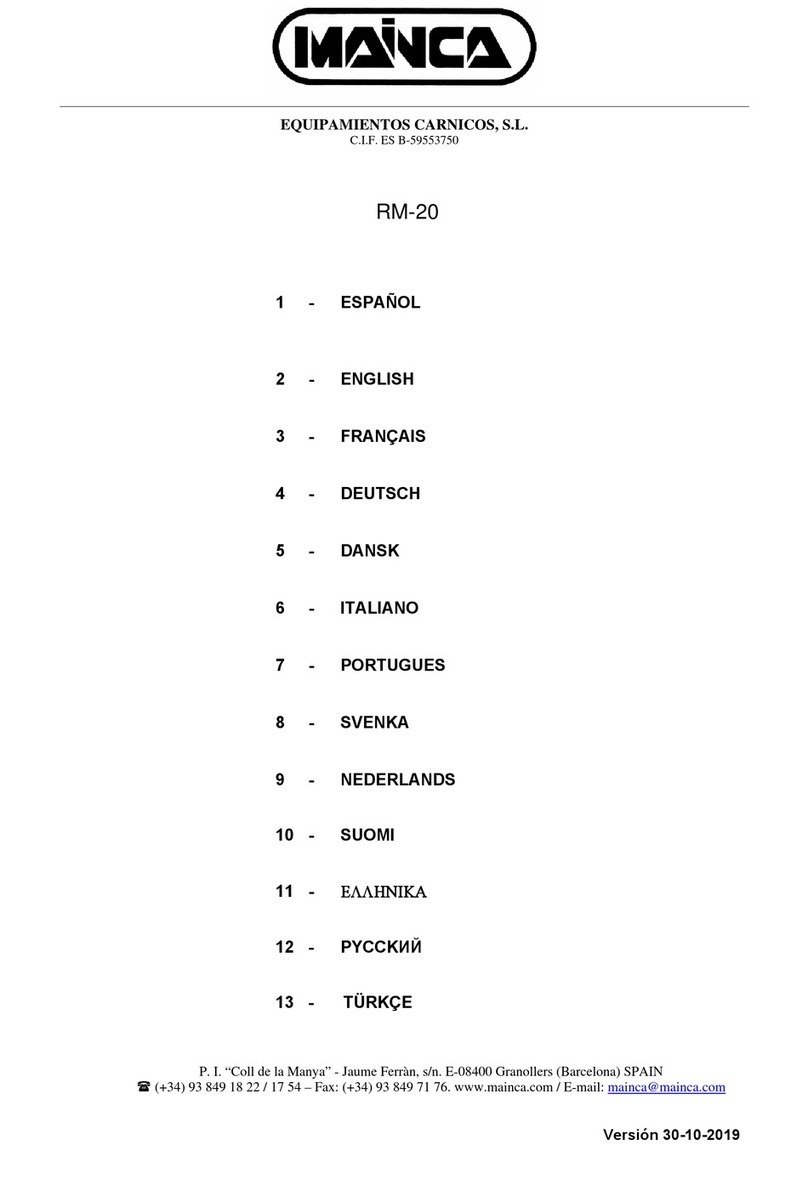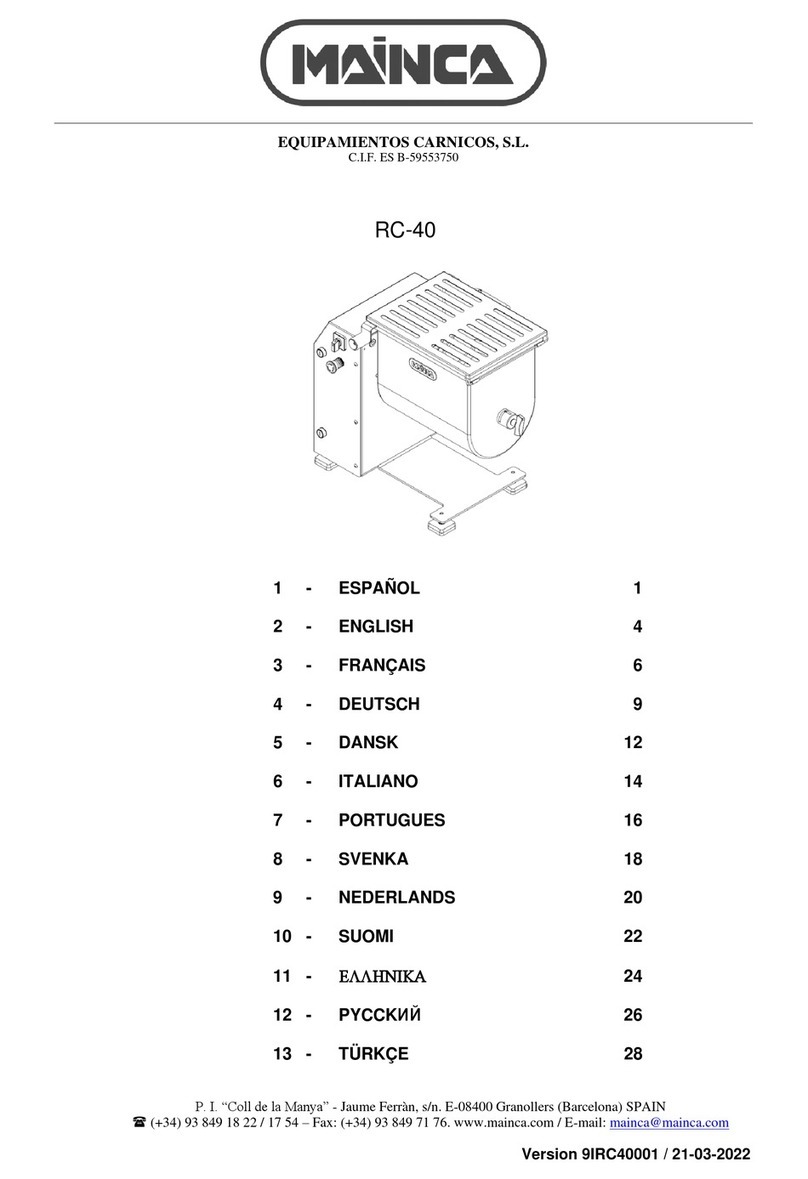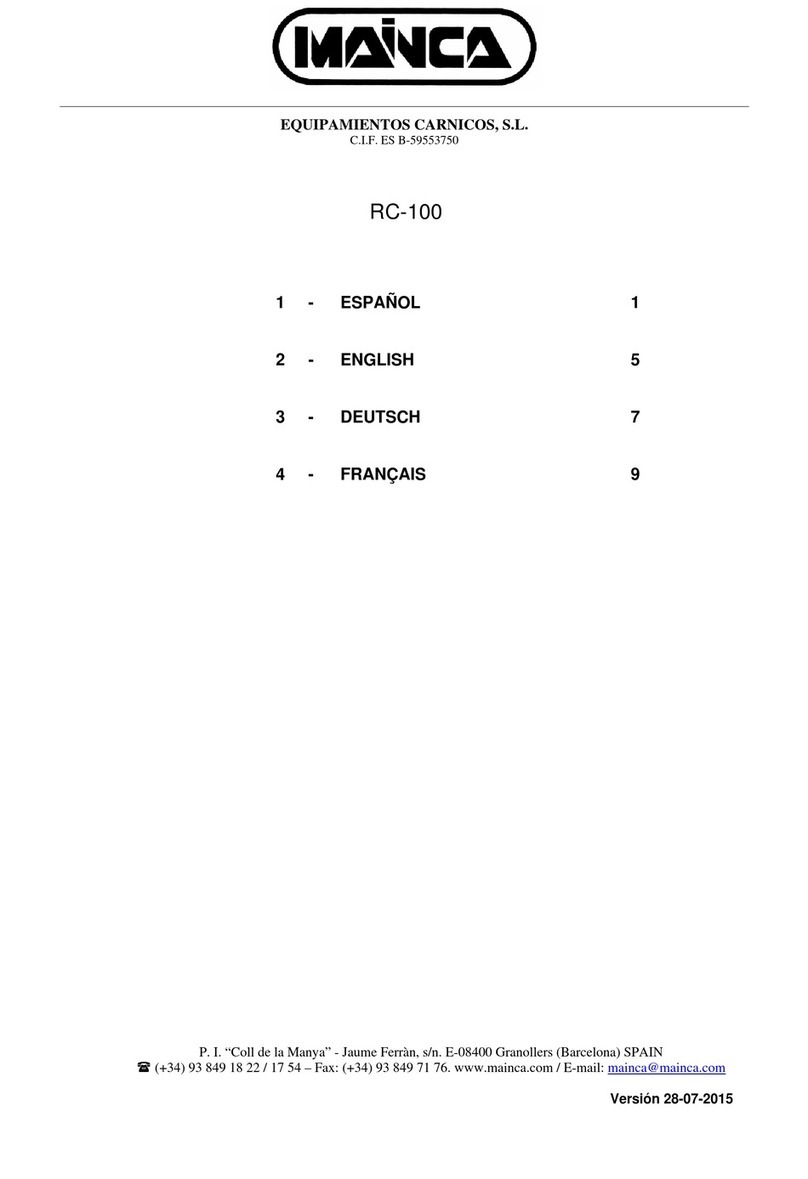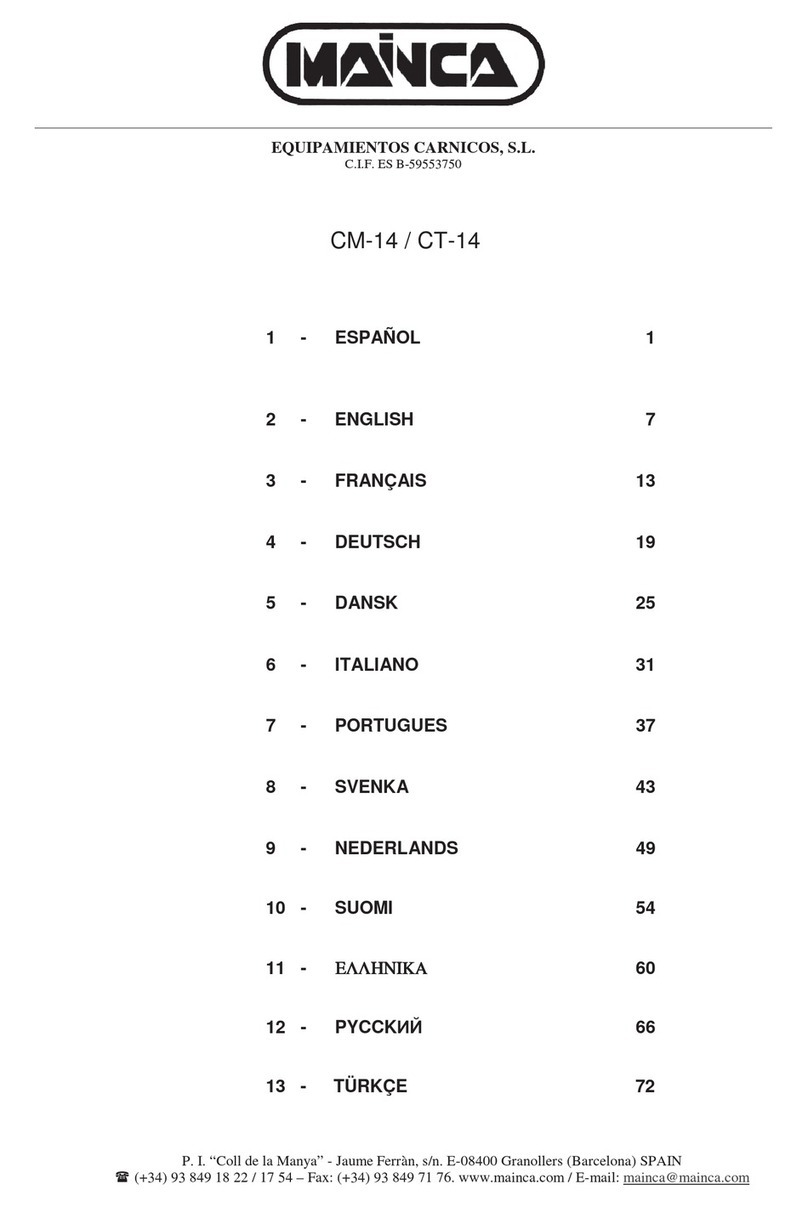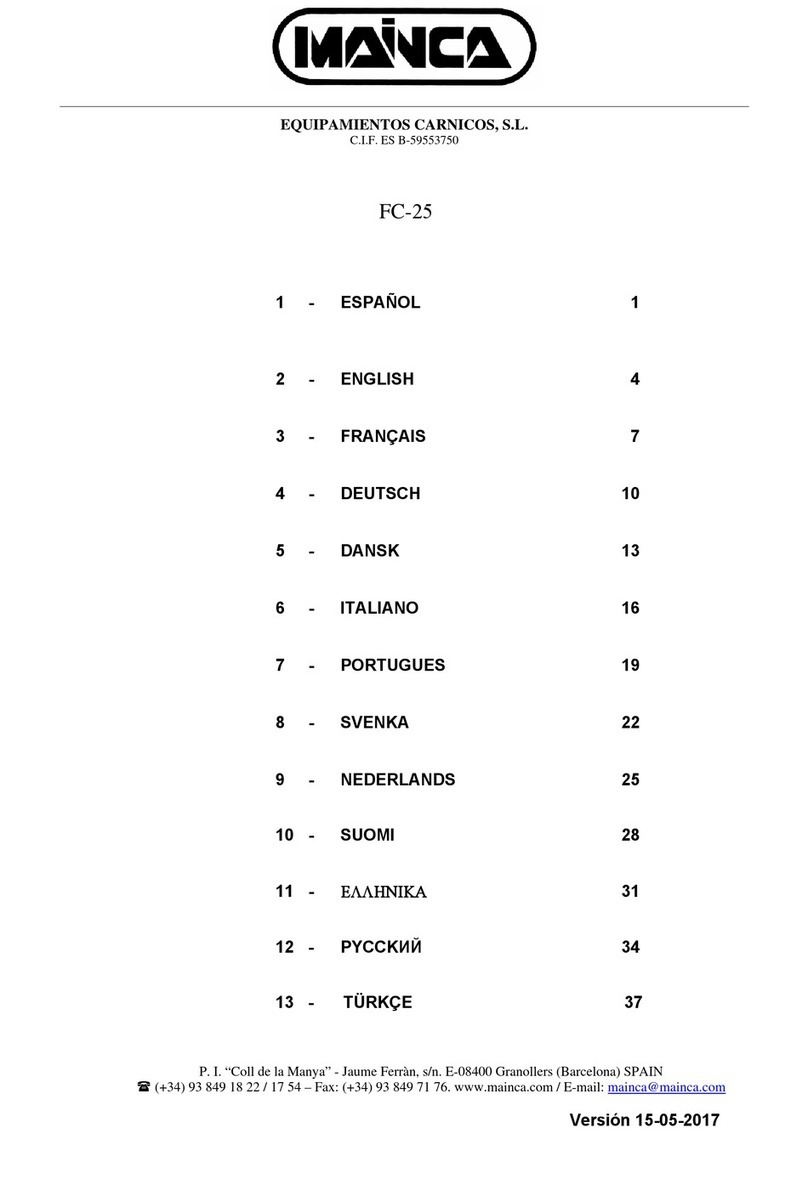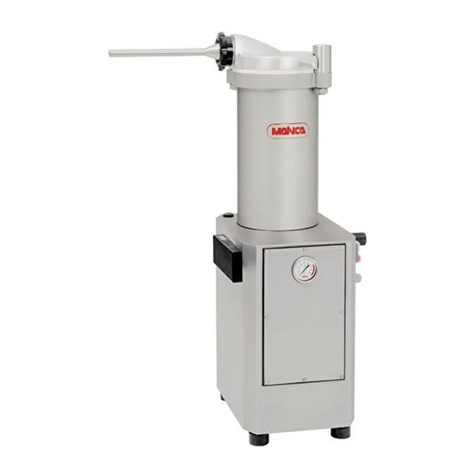
5.- Coloque el Embudo deseado, fijándolo mediante la tuerca cabezal (K) y cargue tripa
natural o de colágeno, humedecida con agua en el embudo (L) del PR-360 y ya puede
empezar a embutir y a porcionar normalmente. Cuanto más gire el pomo (I) en sentido
horario la porción será más pequeña. El rango de porciones va desde 10 grs
aproximadamente hasta 215 grs aproximadamente,una vez conseguido el tamaño
deseado, fije la espiga (M) mediante el pomo (I).En determinados productos (muy licuados
o extremadamente sólidos), trabajar con la presión de la embutidora no apropiada o variar
esta durante el empleo del porcionador puede llegar a desajustar el tamaño de las
porciones. Porcionando miniaturas (porciones de 10 grs aprox.) esta situación puede ser
más acentuada que haciendo porciones grandes, ( ver fig. 3)
6.- Para una mayor coordinación y comprensión del equipo, es altamente aconsejable que
durante los primeros momentos de utilización de éste se haga en posición manual,
combinando rodillera embutidora y Pulsador. Hay que recordar quese trata de un equipo
semi-automático y la habilidad del usuario alimentando a través de la embutidora y
porcionando/torsionando a través del porcionador es muy importante y necesario.
DESCRIPCIÓN AJUSTES Y MODO DE UTILIZACION EN LA PANTALLA:
1- MODO DE UTILIZACION ( primera pantalla )
AUTOMATICO: El PR-360 producirá porciones y a continuación retorcerá
MANUAL: Solo retorcerá cuando se pulse el Boton verde de Marcha
2- TIEMPO PORCION Permite el ajuste del tiempo entre una Torsion y la siguiente.
3- NUMERO DE GIROS EMBUDO Ajusta el numero de giros deseado del Embudo desde
0 hasta 10 v
4- VELOCIDAD EMBUDO Ajusta la velocidad de giro del Embudo
5- RETARDO GIRO PISTON Permite un tiempo de espera posterior al torsionado, antes
de
iniciar una nueva porción.
6- GIROS PISTON POR CICLO Ajusta el número de porciones antes de cada
torsionado; ( su valor habitual es 1 ) se utiliza para porciones mayores a 200 gramos.
7- VELOCIDAD PISTON Ajusta la velocidad de giro del Piston. Normalmente a
2500rpm.












